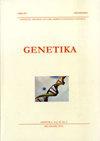Palynological analysis some species of Chenopodiaceae and its systematic implications using scanning electron microscopy
4区 农林科学
Q3 Agricultural and Biological Sciences
引用次数: 0
Abstract
Chenopodiaceae is a large, diverse and cosmopolitan family within the order Carophyllales. The majority of Chenopodiaceae species are adapted to saline, hypersaline, xerophytic and xerohalophytic communities or ruderal habitats. The family Chenopodiaceae is stenopolinous the pollen grains are monad and exclusively polypantoporate with tiny spinules on both tectum and operculum. Pollen morphology of six genera of Chenopodiaceae (Seidlitzia, Atriplex, Bassia, Salsola, Krascheninnikovia and Spinacia) have been studied in details. These plant species were collected from different phytogeographical regions of Iran. The palynological investigation was done using scanning electron microscopy (SEM) techniques. Pollen characters studied in this study include pollen and pore diameters, number and density of apertures, interporal distance (chord), chord/pollen diameter ratio, pore diameter/pollen diameter ratio as well as spinule density on tectum and operculum. We used different multivariate statistical methods to reveal the species relationships. Ward clustering analyses have been done to check out the relationship among the species. The shapes of pollen grains were radially symmetrical, isopolar, pantopolyporate and spheroidal. Their exine structure is similar. In the Chenopodiaceae, three pollen types have been defined, mainly on the basis of pollen grain size, pore number, number of microechinae on pore membrane, the density of spinules, and pore edge shape.若干藜科植物孢粉学分析及其系统意义
藜科是藜亚目中一个庞大、多样、世界性的科。大多数藜科植物适应盐碱、高盐碱、旱生和干盐生群落或野外生境。藜科是窄粒型的,花粉粒为单粒型和多粒型,在顶盖和被盖上都有细小的小刺。本文对藜科6属(荆芥属、凤梨属、巴西属、Salsola属、Krascheninnikovia属和Spinacia属)的花粉形态进行了较为详细的研究。这些植物种类来自伊朗不同的植物地理区域。孢粉学研究采用扫描电镜(SEM)技术。本研究研究的花粉性状包括花粉和孔径、孔数和密度、间隔距离(弦)、弦/花粉直径比、孔径/花粉直径比以及顶盖和盖上的小针尖密度。我们使用不同的多元统计方法来揭示物种关系。Ward聚类分析已经完成,以检查物种之间的关系。花粉粒形状呈径向对称、等极性、宽多孔和球状。它们的外阴结构相似。藜科植物的花粉可分为三种类型,主要根据花粉的粒度、孔数、孔膜上的微棘粒数、小刺的密度和孔边缘形状来划分。
本文章由计算机程序翻译,如有差异,请以英文原文为准。
求助全文
约1分钟内获得全文
求助全文
来源期刊

Genetika-Belgrade
AGRONOMY-GENETICS & HEREDITY
CiteScore
1.80
自引率
0.00%
发文量
1
审稿时长
6-12 weeks
期刊介绍:
The GENETIKA is dedicated to genetic studies of all organisms including genetics of microorganisms, plant genetics, animal genetics, human genetics, molecular genetics, genomics, functional genomics, plant and animal breeding, population and evolutionary genetics, mutagenesis and genotoxicology and biotechnology.
 求助内容:
求助内容: 应助结果提醒方式:
应助结果提醒方式:


